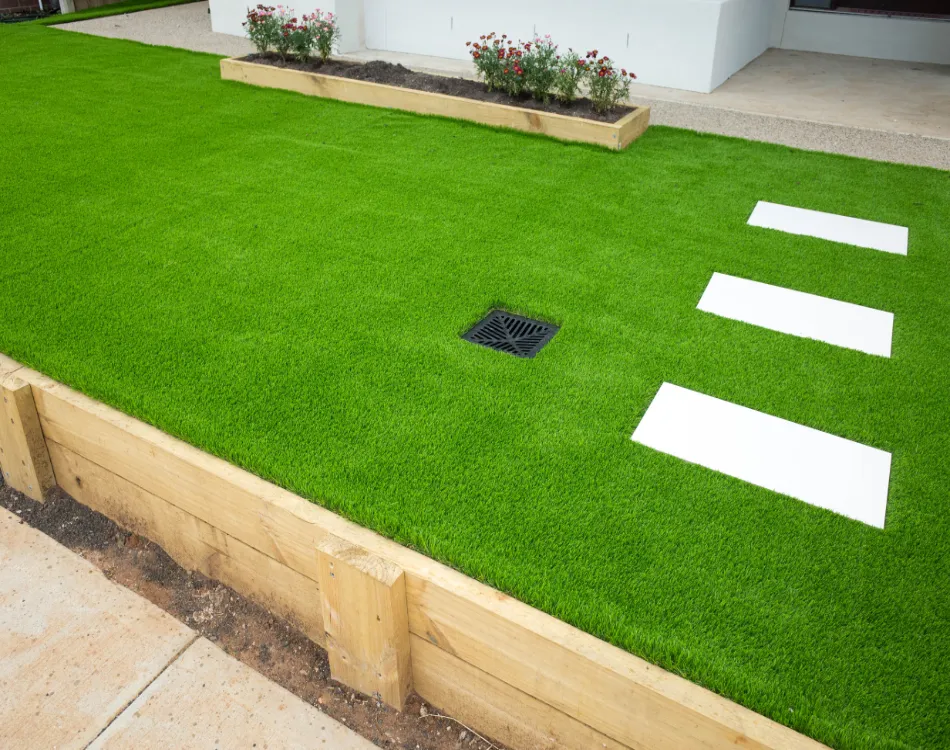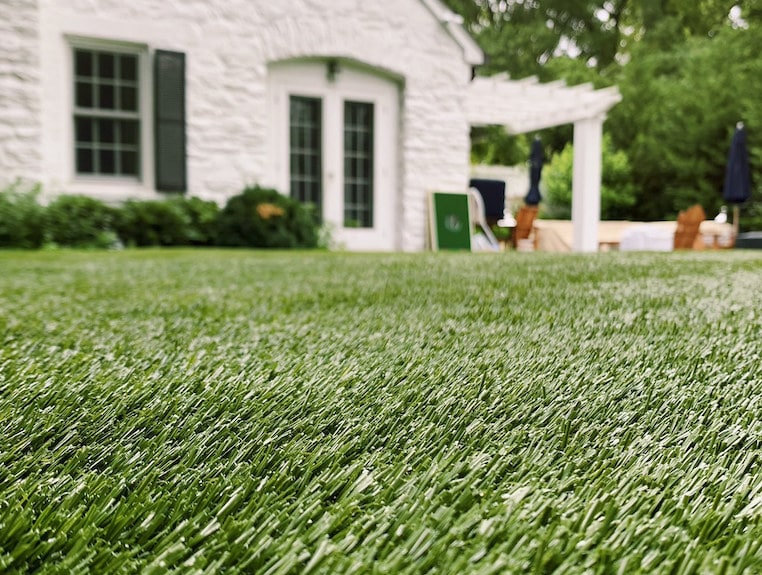Premium Arizona Turf Options for a Stunning and Lush Landscape
Premium Arizona Turf Options for a Stunning and Lush Landscape
Blog Article
Delve Into the Environmental Benefits of Opting for Synthetic Grass Solutions
The adoption of artificial lawn remedies offers an engaging opportunity to address pushing ecological obstacles. By dramatically minimizing water usage and decreasing the application of hazardous chemicals, these choices not just advertise sustainable landscape design however additionally secure local ecological communities. Additionally, the lower carbon footprint connected with reduced upkeep tasks adds to a more lasting strategy to land management. The ramifications of these benefits expand beyond plain conservation efforts, elevating inquiries concerning their long-lasting impact on habitat preservation and general environmental balance. Checking out these dimensions reveals a complex interaction worth thinking about.
Water Conservation Benefits
One of one of the most considerable benefits of fabricated lawn is its capability to preserve water. Standard lawn lawns require substantial irrigation, specifically in locations vulnerable to drought or water limitations. In comparison, synthetic grass does not need watering, considerably decreasing the overall need for water resources. This feature is specifically beneficial in dry regions where water deficiency is a pressing worry.
By eliminating the need for routine watering, artificial grass adds to sustainable landscape practices and helps reduce the ecological effect of extreme water usage. Furthermore, the preservation of water extends to the reduction of runoff, which can bring about dirt disintegration and waterway contamination.
In addition, the installment of artificial lawn permits property owners and communities to designate water resources much more effectively, concentrating on vital usages such as drinking water and farming. The shift towards synthetic grass not only advertises responsible water use yet also lines up with more comprehensive environmental goals aimed at preserving natural resources.
As areas progressively prioritize sustainability, the water preservation advantages of man-made grass offer an engaging instance for its fostering in property and business landscaping tasks.
Minimized Chemical Use
The shift to synthetic grass significantly reduces the dependence on chemical treatments typically made use of in natural turf maintenance. Conventional turf monitoring typically includes the application of herbicides, fertilizers, and chemicals to advertise growth and control pests. These chemicals can pose risks to human wellness, regional wild animals, and the environment, contributing to soil and water contamination.
In contrast, artificial grass gets rid of the demand for these damaging substances. By lessening the launch of synthetic compounds right into the ecosystem, fabricated grass advertises healthier soil and water systems.
Moreover, the absence of chemical runoff related to synthetic turf installments aids secure neighborhood waterways from air pollution, sustaining water life and preserving biodiversity. Artificial turf companies phoenix. As neighborhoods progressively prioritize lasting practices, deciding for fabricated lawn presents a feasible option that straightens with environmental preservation goals. Through this change, building proprietors can delight in lavish eco-friendly rooms without jeopardizing environmental health and wellness, leading the way for a more lasting future
Reduced Carbon Impact

In addition, the installation of artificial turf can result in substantial water conservation. All-natural yards need substantial amounts of water for watering, which not just includes in the carbon impact connected with water extraction and therapy but additionally stress local water sources. On the other hand, synthetic grass needs minimal maintenance, calling for no watering, consequently significantly reducing water usage and its connected power prices.
Furthermore, the durability of synthetic grass adds to its decreased carbon influence. With a life-span of as much as 15 years or more, the need for regular replacements is diminished, leading to much less waste and reduced energy usage in manufacturing and dealing with conventional grass choices. Overall, synthetic grass presents a lasting alternative for environmentally mindful landscape design.
Habitat Conservation
Habitat preservation is an important factor to consider in the argument over landscaping selections, particularly when comparing man-made turf to natural turf. All-natural yard yards frequently require substantial maintenance, consisting of the usage of herbicides, plant foods, and pesticides, which can negatively affect local ecological communities. These chemicals can seep into the soil and waterways, hurting native flora and fauna and interrupting regional environments.
Man-made lawn gets rid of the demand for hazardous chemicals, thus securing close-by wild animals and preserving the integrity of bordering environments. The installment of artificial grass can lead to the conversion of former grass locations into even more biodiverse landscapes, such as pollinator gardens or native plant areas, which can support local wildlife.
Inevitably, the transition to synthetic grass not just conserves water and decreases maintenance efforts however likewise fosters a much more harmonious partnership between human activities and the natural surroundings, advertising habitat conservation in the process.
Long-Term Sustainability
Long-lasting sustainability is a critical element in examining the advantages of synthetic grass over conventional grass yards. Among the most significant advantages of synthetic grass is its toughness; it can last as much as 15-20 years with marginal upkeep, whereas all-natural yard needs regular reseeding and replacement. This long life minimizes the demand for continuous sources, such as water, plant foods, and pesticides, which are important for preserving a healthy and balanced pop over to these guys yard lawn.
In addition, synthetic grass adds to a decrease in carbon exhausts connected with grass look at here treatment tools. Standard yards commonly require gas-powered mowers, leaners, and blowers, all of which add to air pollution. Phoenix turf companies. In comparison, synthetic grass removes the need for such tools, promoting a cleaner environment
Furthermore, the production of synthetic grass significantly utilizes recycled products, improving its sustainability account. As producers take on green methods, the environmental impact of man-made turf continues to diminish.

Conclusion
The adoption of synthetic grass services provides substantial ecological benefits, including substantial water preservation, decreased reliance on hazardous chemicals, and a reduced carbon footprint. Moreover, artificial grass help in preserving natural habitats by lessening land disturbance and advertising long-term sustainability via using durable materials. Jointly, these factors underscore the possibility of man-made grass to add positively to environmental health and supply a practical alternative to conventional landscaping practices in a significantly resource-conscious world.
In comparison, artificial turf does not require watering, significantly decreasing the overall demand for water sources. By lessening the launch of synthetic compounds into the ecosystem, man-made grass promotes much healthier soil and water systems.
Moreover, the setup of fabricated turf can result in significant water preservation. In comparison, fabricated turf requires very little upkeep, needing no check this site out watering, consequently dramatically minimizing water usage and its connected power expenses.

Report this page